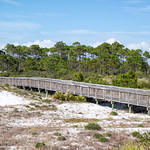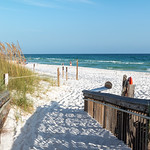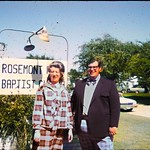CAMP WALTON SCHOOLHOUSE MUSEUM
FORT WALTON BEACH, FL

Camp Walton Schoolhouse Museum is a historical museum located in Fort Walton Beach, Florida. The museum is housed in a former school building that was built in 1911 and served as a school until 1936. The building was then used as a community center and later as a library until it was converted into a museum in 1988.
The museum showcases the rich history of the Fort Walton Beach area, including the Native American tribes who once lived in the area, the early settlers who founded the town, and the military history of the region. Visitors can explore exhibits that feature artifacts, photographs, and documents that tell the story of the area's past.
The museum also features a replica of an early 1900s classroom, complete with desks, chalkboards, and other school supplies. Visitors can step back in time and experience what it was like to attend school in the early 1900s.
Camp Walton Schoolhouse Museum is open to the public and offers guided tours for groups and school field trips. The museum is a unique and educational experience for visitors of all ages who want to learn more about the history of Fort Walton Beach and the surrounding area.
CAMP WALTON SCHOOLHOUSE MUSEUM is a Historical Societies, Historic Preservation in FORT WALTON BEACH FL. US MID #8401200256
The museum is classed as HSC (Historical Societies, Historic Preservation). It comes under American Alliance of Museums (AAM) region: Southeastern (Alabama, Arkansas, Florida, Georgia, Kentucky, Louisiana, Mississippi, North Carolina, South Carolina, Tennessee, Virginia, West Virginia).
Contact CAMP WALTON SCHOOLHOUSE MUSEUM
- telephone: 8508339595
- website: http://www.fwb.org/index.php/museums.html
CAMP WALTON SCHOOLHOUSE MUSEUM
127 MIRACLE STRIP PKWY SE
FORT WALTON BEACH
FL
32548
Disclaimer: please note this database is maintained by volunteers and whilst we endeavour to do our best, we cannot guarantee the accuracy of the listing.
If you notice any errors or omissions in the listing, please let us know in the comments section below.
Find more FORT WALTON BEACH FL Museums
What 3 Words
///respectively.swerving.responders. Near Fort Walton Beach, Florida
Map of CAMP WALTON SCHOOLHOUSE MUSEUM
CAMP WALTON SCHOOLHOUSE MUSEUM Information
| MID # | 8401200256 |
| Name | CAMP WALTON SCHOOLHOUSE MUSEUM |
| Alternate Name | |
| Classification | Historical Societies, Historic Preservation, , Southeastern |
| Federal Employer Identification Number (EIN) | |
| NTEECC | |
| Tax period of the latest return filed (YYYYMM) | |
| INCOME | 0 |
| REVENUE | 0 |
| LAT/LONG | 30.405169, -86.62293 |
| CODES | FIPS State Code: 12 FIPS County Code: 091 US Census Tract: 022600 US Census Block: 3029 |











